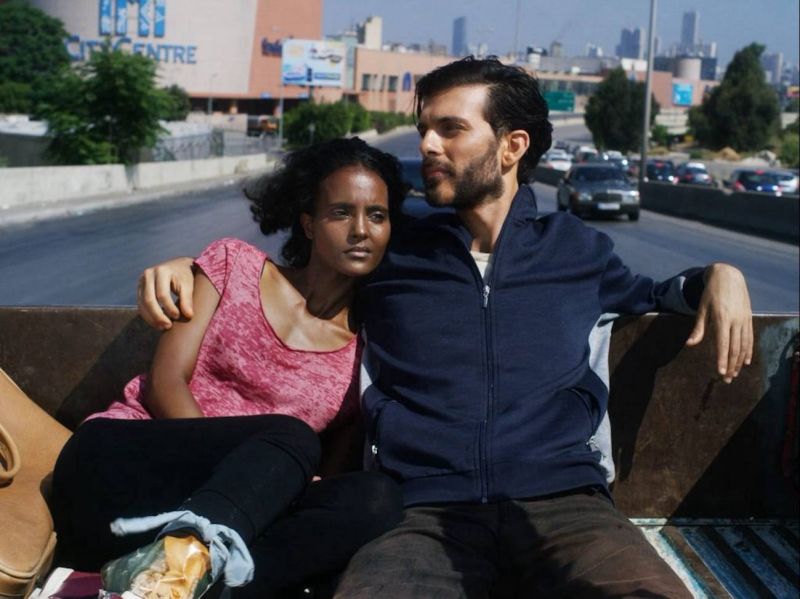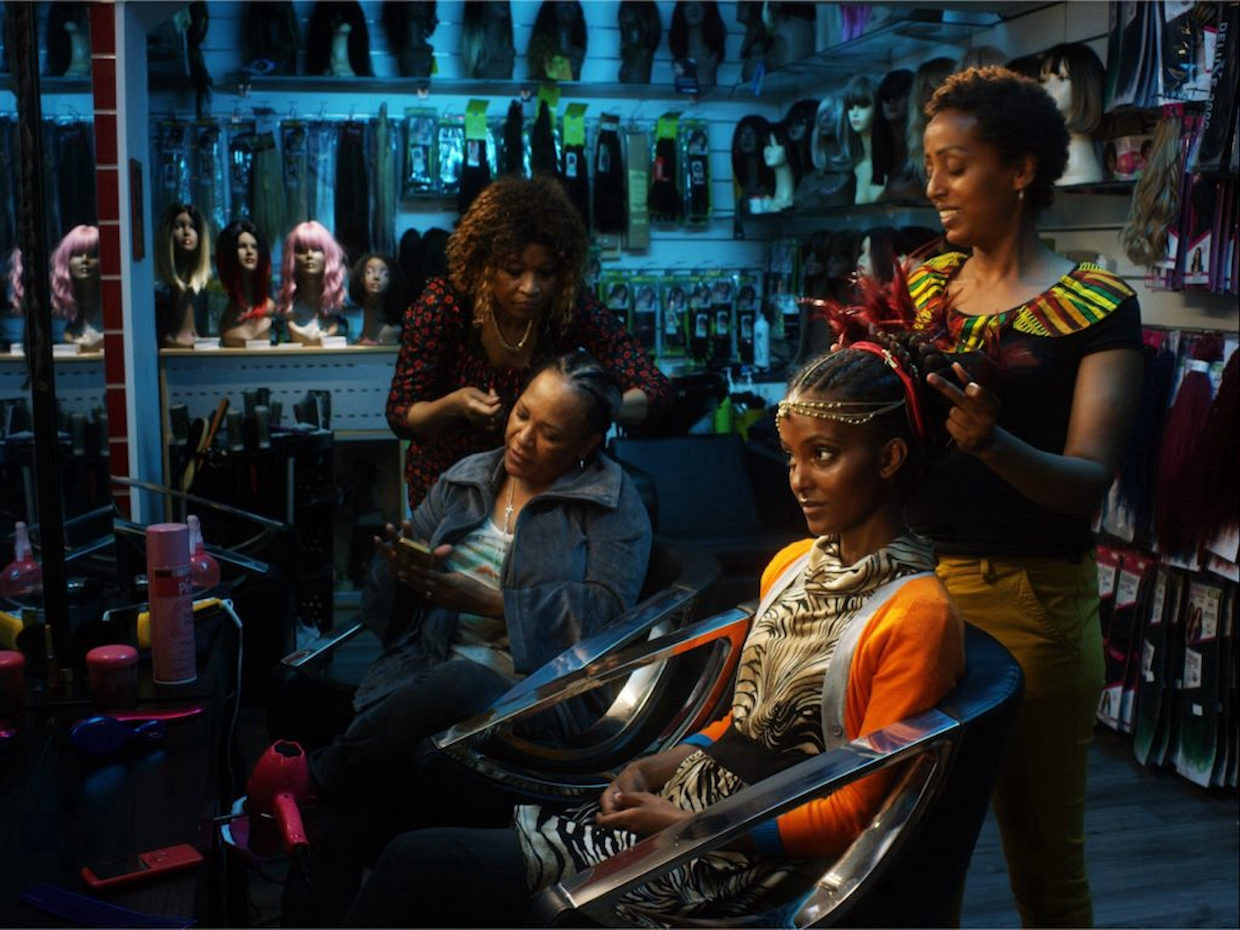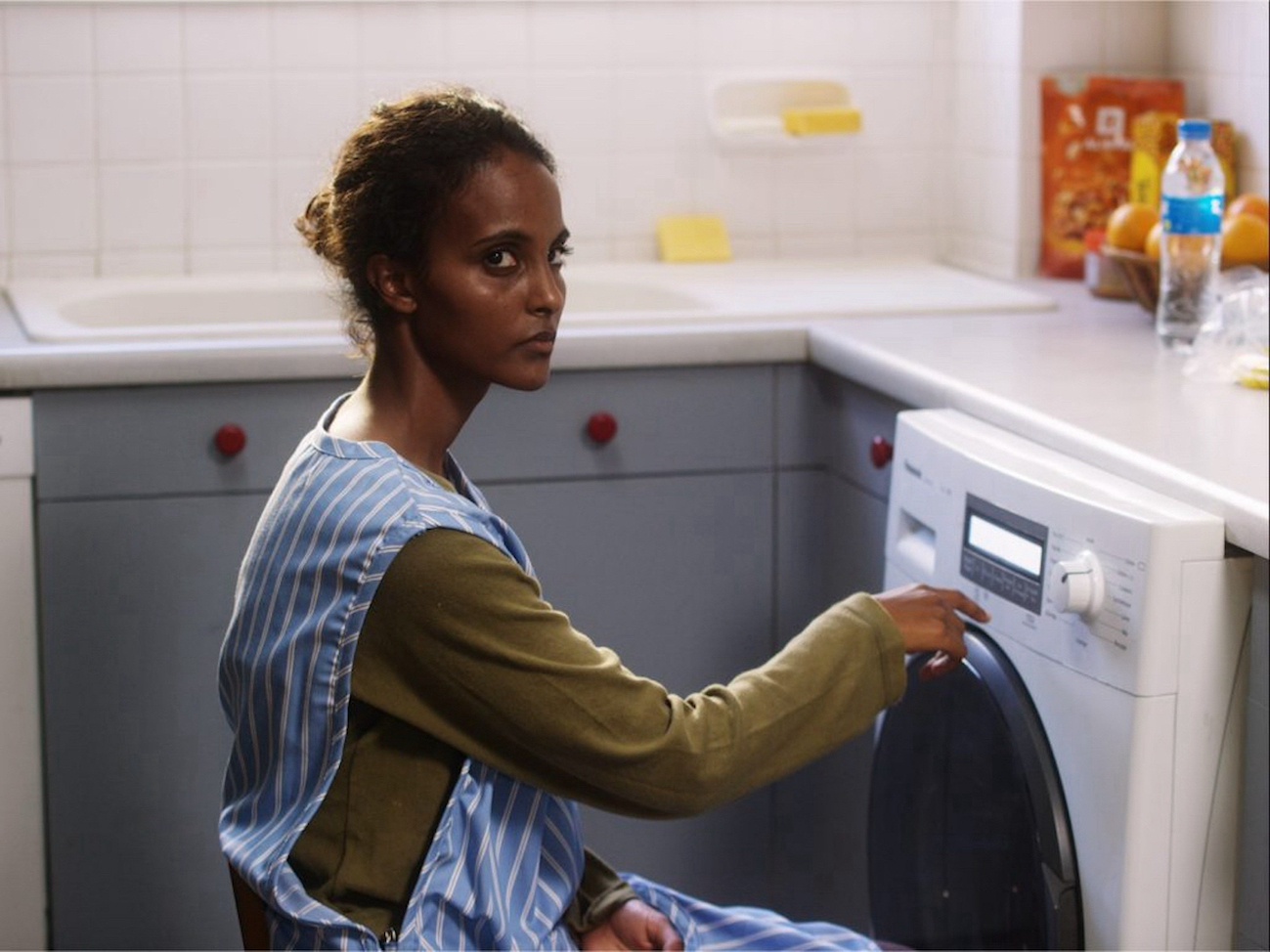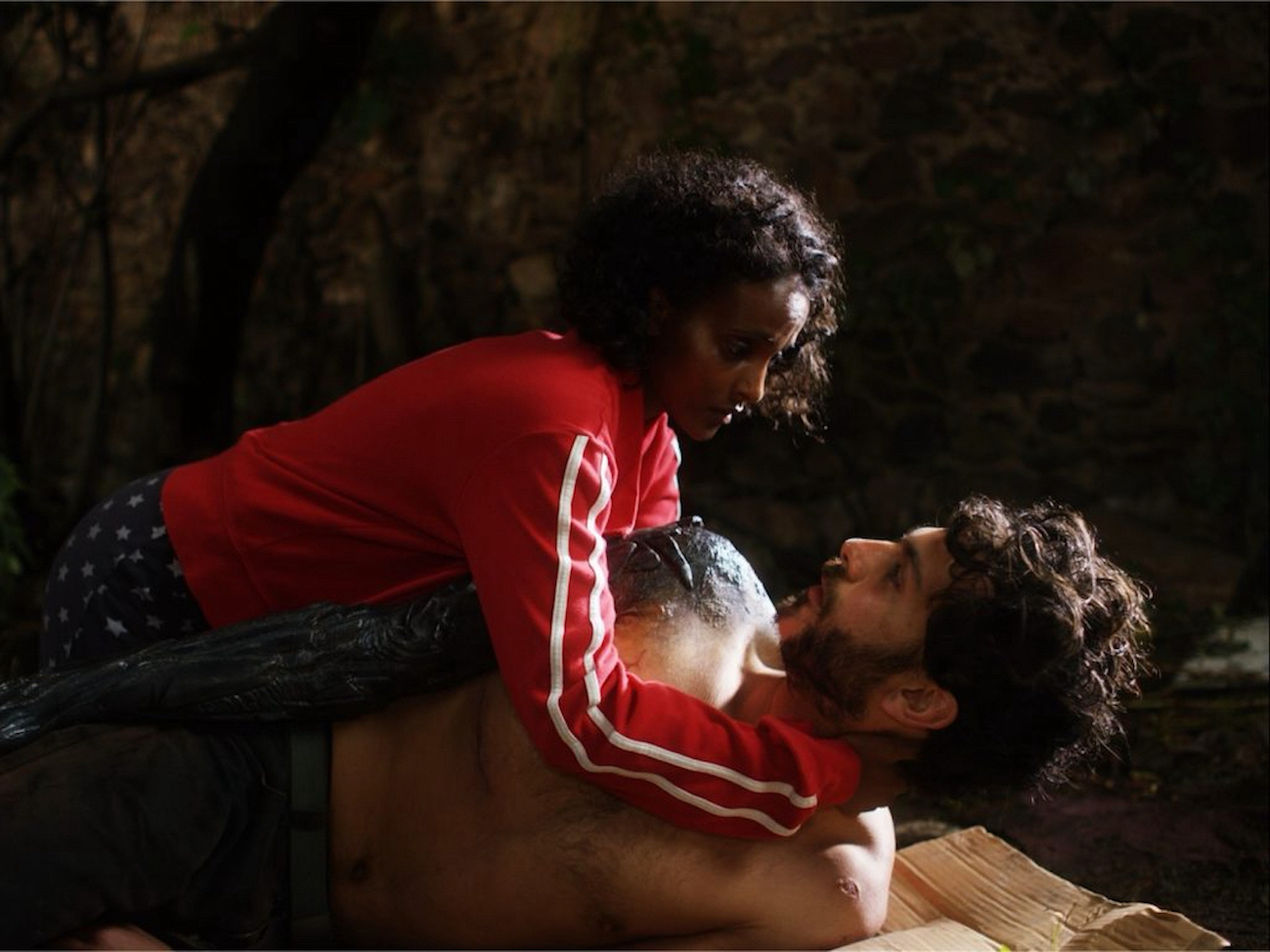
Clara Couturet’s Mehdia and Ziad Jallad’s Ahmad in a still from "Dirty Dangerous Difficult." (Credit: Intramovies)
BEIRUT — Among Lebanese filmmakers, whether at home or overseas, Wissam Charaf’s work is unique.
While his first two feature films were shot in Lebanon and reflect a quirky, dry sense of humor about the place, they ignore the conventions of cinematic realism that propel the country’s popular cinema. Though both Charaf’s features have been picked up by international film festivals, they don’t much resemble the work of Lebanon’s better known auteur filmmakers.
Dirty Difficult Dangerous, Charaf’s second feature-length fiction, premiered this summer at the Venice film festival. The film opened the Giornate degli Autori, “Auteurs Days,” an independent cinema-focused parallel program to Venice’s main competition, like Cannes’ Directors’ Fortnight. There Charaf’s film won the Europa Cinemas Label prize, which awards the most promising European film with continent-wide distribution.
“Yeah, it’s a European film,” Charaf says, “financed by France and Italy. I got some extra financing and post-production from Qatar and Saudi. Nothing from Lebanon. It’s a distribution prize, which is great because this kind of movie needs to be watched on the big screen. We’ll be distributed in more cinemas across Europe. That’s usually the goal — to have the film seen.”
Charaf sat with L’Orient Today recently to discuss Dirty Difficult Dangerous, a film he’s been working on for a decade, and finding his voice as a filmmaker.
A story of love amidst discrimination
Dirty Difficult Dangerous relates a Beirut love story. The protagonists are Mehdia (Clara Couturet), an Ethiopian domestic laborer, and Ahmed (Ziad Jallad), a Syrian refugee.
Charaf, who divides his time between France and Lebanon, says he started work on the script in 2012, when refugees began fleeing Syria in response to state violence against its citizens. He was covering the refugee crisis as a journalist and was struck by two migrant communities on Beirut’s streets.
“We have these guys calling out for people’s scrap metal — ‘Hadid. Nhass. Batariyya!’ [Iron. Copper. Batteries, the film’s Arabic title],” he says, imitating the nasal tones of Beirut’s Syrian metal collectors use as they move through residential neighborhoods. And on those same residential streets, he adds, “ there’s another population: Ethiopian women carrying their madams and misters, elderly people usually, helping them to walk.”
Beirut is home — however transient it may be — to tens of thousands of Ethiopian domestic workers residing in Lebanon under the so-called “kafala,” or “sponsorship” system. Meanwhile, in 2021 the UNHCR estimated there were 1.5 million Syrian refugees in the country.
 Clara Couturet’s Mehdia, seated right, in a still from "Dirty Dangerous Difficult." (Credit: Intramovies)
Clara Couturet’s Mehdia, seated right, in a still from "Dirty Dangerous Difficult." (Credit: Intramovies)
“I saw those two Atlases, people objectified as carrying devices — him carrying metal, her carrying flesh — on two parallel trajectories. My wife [and writing partner, visual artist Hala Dabaji] and I thought, ‘Let’s make something unacceptable to the Lebanese. Let’s make them fall in love. Why is this unacceptable? Because with our daily unconscious racism we don’t believe it could happen. It happens, but in the eyes of bourgeois Lebanese, these people don't have the right to a love life.”
“Usually a love story is just cheese,” Charaf acknowledges, “but if it’s the story of two marginal figures, then a love story, giving them the right to a love life, is also a political statement.“I didn’t want to make a social film à la [the UK’s] Ken Loach,” he adds. “I didn't want to make a 90-minute lament about people suffering and crying. We said, ‘Let’s add something.’ So this film found its way to vampire-slash-Gothic-slash-slightly-science fiction territory.”
Charaf locates Dirty Difficult Dangerous between Bela Lugosi, the Hungarian-born actor of the black-and-white-era famed for his depictions of Count Dracula, and Shinya Tsukamoto’s 1989 cyberpunk film Tetsuo: The Iron Man.
“We couldn’t afford a Bela Lugosi clip for the film, so we had Nosferatu instead, because it’s in the public domain,” he laughs. Nosferatu is a 1922 German film adaptation of Bram Stoker’s Dracula. “Fortunately [Lebanese actor] Rifaat Tarabay looks a bit like Nosferatu.”
Tarabay plays Ibrahim, the father of Mehdia’s employer. Mehdia is responsible for looking after him, despite his fixation on vampires, which makes it impossible for her to have an uninterrupted night’s sleep.
 Clara Couturet’s Mehdia in a still from ‘Dirty Dangerous Difficult.’ (Credit: Intramovies)
Clara Couturet’s Mehdia in a still from ‘Dirty Dangerous Difficult.’ (Credit: Intramovies)
Vampirism has been a significant theme in the contemporary art of post-Civil War Lebanon, not least the critical writing of Jalal Toufic. A man’s transformation into a vampire was the premise of Ghassan Salhab’s 2006 film The Last Man.
Though Charaf also finds a Lebanon-appropriate metaphor in the vampire myth, he says he was less inspired by Salhab’s work than the inadvertent comedy of the late horror film actor Lugosi.
“I always like to treat elderly people in a comic way,” he smiles. “It’s more about the elderly people in my family. They go coocoo. I think I’ll end up like that myself.”
Another fantastical element in Charaf’s film — at once non-comic and more central to the plot — revolves around the bits of metal trapped in Ahmed’s body. It’s not uncommon that people living in war zones carry traces of metal from exploded ordnance in their bodies. In Ahmed’s case, he has so much shrapnel in his body that he sets off metal detectors. He pulls shards of it from unhealed wounds, like Dr. Victor Von Doom in a Fantastic Four movie, albeit without supervillain’s powers. Ahmed’s condition worsens, with his right arm blackening and growing ever more metallic as the story develops.
“He has been treated as an object, so he starts becoming an object,” Charaf says. “So is Mehdia. Madame and her family are always calling her, ‘Mehdia! Mehdia! Mehdia!’ dragging her out of the frame. Neither of them has their own place — a place to shag, or to live their love, even to kiss. Every time they try to kiss, someone calls them or something bad happens. They don’t have a place for love, and they don’t have a place in the frame.”
 Clara Couturet’s Mehdia and Ziad Jallad’s Ahmad in a still from "Dirty Dangerous Difficult." (Credit: Intramovies)
Clara Couturet’s Mehdia and Ziad Jallad’s Ahmad in a still from "Dirty Dangerous Difficult." (Credit: Intramovies)
A voice rooted in experimentation
Charaf’s approach to humane storytelling may be unconventional by commercial cinema standards but it’s not unprecedented. He says his approach to directing actors is derived from that of 20th-century French writer-director Robert Bresson, whose actor’s performances are notably flat and expressionless.
“I tell them, ‘Don't act. Just just do as I tell you.’ I usually play the movement in front of them, like I see it. I want them to just copy-paste,” he laughs. “Usually I work only on gestures and dialogue and volume. I never talk to them about psychology. I talk to them about what they want from the other, as a character. ‘You want him to be convinced to give you the money.’ This is the only thing, not ‘You are sad’ or ‘You are happy,’” Charaf says.
“Then I let them cook it,” he chuckles. “I show them the door and they have to pass through. Usually some people like it and some are pretty destabilized. At the end they see the film and say, ‘Ah, okay.’”
He laughs. “It's a question of trust. Usually the actors are happy. The elderly don’t really understand. Rifaat Tarabay, he’s an old-timer, a mu‘allim. He was very difficult, not to direct but to dose into the montage, because he has an amazing energy. In a canary yellow bathrobe, Rifaat Tarabay takes all the energy of the frame. In the first version, everybody thought that the film was about him. So we cut, and cut and cut, until what was left was the exact dosage for him not to eat the rest. This is the magic of editing.”
Charaf says one of the reasons Dirty Difficult Dangerous took so long to make was a perceived glut of films focusing on Syrian refugees.
“We tried to evoke the social situation without treating it directly because it would be too much deja vu. There have been a lot of social films on the Syrian refugees, though not many on Lebanese Ethiopians,” he says. Potential funders “read the synopsis and said, ‘Oh shit, another film about Syrian refugees.’
“It took 10 years to make [his first feature-length fiction] Tombe du Ciel too. Now I’m almost 50,” he laughs. “It’s very difficult to finance my films, because they always have dual [comic and dramatic] tones. With dual tones, they think you don’t know what you’re doing. I guess it’s normal. If they don't know you, they think you’re wrong,” says Charaf.
“Now that I’m releasing films and my style is starting to be known, maybe they’ll decide, ‘Okay, it’s not wrong. It’s Wissam.” He laughs again. “The guy between Aki Kaurismäki and Elia Suleiman and Jim Jarmusch — the Holy Trinity that critics keep associating with my work.”
